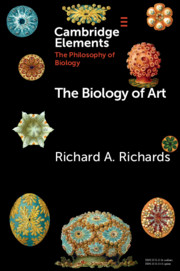Element contents
The Biology of Art
Published online by Cambridge University Press: 07 June 2019
Summary
Keywords
- Type
- Element
- Information
- Online ISBN: 9781108672078Publisher: Cambridge University PressPrint publication: 23 May 2019
References
- 24
- Cited by



